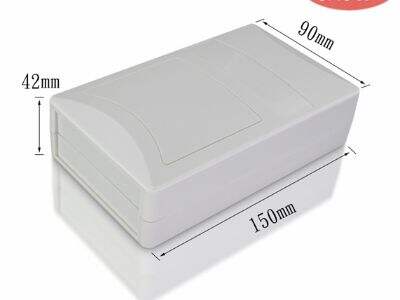IP and NEMA protection ratings,Have you ever heard about it? These ratings are critical in determining how well electronic appliances can withstand extreme conditions when they come in contact with them, such as water, dust, and other environmental elements. Objectives: In this lesson, you will learn to differentiate between IP & NEMA protection ratings. Then we will talk about the necessity of these ratings in different jobs and fields which helps us determine the ideal equipment for diverse scenes.
What Do The IP And NEMA Protection Ratings Signify?
IP and NEMA protection ratings are basically standards that inform us how well an electronic device can resist damage due to water and debris.
IP – or Ingress Protection – means how well something is able to keep the outside out.
It is important to note that NEMA is an acronym for National Electrical Manufacturers Association.
IP ratings tell you how waterproof or dust-proof a device is. An IP rating consists of two numbers — the first of which indicates its resistance to dust and the second indicates its resistance to water. One such numerical rating that defines the display performance against the environmental conditions is IP (Ingress Protection) rating. For instance, if a device has an IP65 rating, ip65 plastic enclosure is impervious to dust and can resist water spray.
NEMA ratings take into account how devices or equipment can work seamlessly in harsh conditions like rust or chemical exposure. These are ratings based on the surroundings the equipment will be used within. For example, a NEMA rating might indicate a device is qualified to withstand moisture or potential chemical spills.
Comparing IP and NEMA Ratings
These two ratings indicate how well electronic devices are safe against damage caused by different factors such as heat and moisture. They, on the other hand, protect against different things. IP ratings normally apply to electronic devices that may be subject to moisture, dirt, or dust. A common one, for instance, is IP ratings which are common on outdoor-used devices like cameras or lights where water and dirt resistance is a must. NEMA ratings apply to more rugged equipment subjected to harsher conditions. These are the ratings often found on products created for use in the factory or chemical plants due to the exposure of some aggressive material.
How Do These Ratings Influence Durability?
IP and NEMA ratings help others to gauge the durability of electronic devices in harsh environments. The higher rating means that the device will be more protected from harmful elements.
Say, if a device is rated IP68, it can be immersed in water more than one meter without it suffering a damage. This is super useful for devices that may happen to fall into the water. In like manner, for a NEMA 4X, it implies that the device is sufficiently fixed against rust, blowing dust and a spitting of water. Such protection is important for any equipment operating in wet or polluted environments.
Choosing the Right Rating
When Choosing Between IP and NEMA Ratings, Consider Where You Will Use the Equipment IP ratings are typically the better option if you're going to be using the device outdoors, particularly near water. IP-rated protection might be needed against rain for tools such as those used in gardening or construction. But when it comes to protecting the equipment from extreme gases or refreshment oils or coolants, NEMA ratings are more appropriate. These plastic enclosure ip65 ratings will guarantee that the chip can tolerate chemical exposure to challenging reactants for no physical degradation.
What to Know for Your Job
Hands-on work in various jobs and industries has specific electronic equipment needs. In fields, the devices in the farming industry need protection against the water and dust. Farmers require IP-rated machinery to ensure their devices continue to function in the harshest outdoor climates. On the other hand, the manufacturing industry calls for equipment that can withstand chemical surfaces, rust, several washes, and even spills. This is more critical than its just the NEMA rating that guarantees that the tools will survive longer in the harsh factory conditions.
If a job calls for resistance to water, in addition to dust or dirt, IP ratings of 67 or 68 are almost always a better bet. These ratings mean the devices can properly handle water and dust exposure. Meanwhile, industries that are required to handle chemicals such as chemical manufacturing may have to consider NEMA ratings in order to maximize the effective lifespan of their equipment need.
Overall, when it comes to determining the robustness and dependability of an electronic device, IP and NEMA protection ratings are crucial. Both IP and NEMA protection ratings can provide advantages in terms of longevity and performance of equipment depending on the particular requirements of an industry or job. We feature them into our products with high abs ip65 enclosure and NEMA protection rating at Hongfa Shunda. Time tested and reliable products are a result of this commitment as well, making sure that our products will continue to provide optimal service in the most demanding conditions for years to come.


